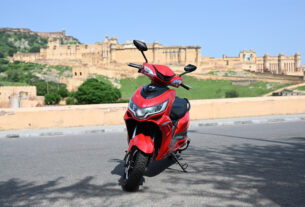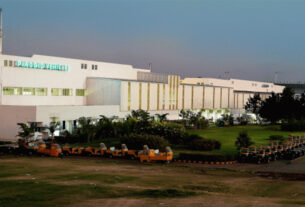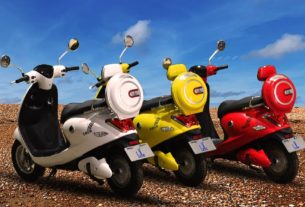Piyush Prasad, National Business Head, Hero Electric and Praharsh Chandra, Co-Founder and COO, Shadowfax share the dais to announce the delivery of 100 e-scooters at a press conference. Sarada Vishnubhatla was present to know the details.
The economics of the fleet conversion to EVs is becoming more and more dynamic. Amenable ecosystem with policies facilitating it, the number of multiple partnerships between the OEMs and the logistic providers is increasing by the day. In July 2022, the last mile delivery platform, Shadowfax received the first batch of 100 e- scooters from Hero Electric. This facilitates Shadowfax’s aim to convert 75 per cent of their fleet to EVs by 2025. The delivered e-scooters are NYX HS500 ER models and in the last few months, Shadowfax has been looking at deploying approximately 1000 more units. The idea is to etch a carbon-free footprint in the logistics market.
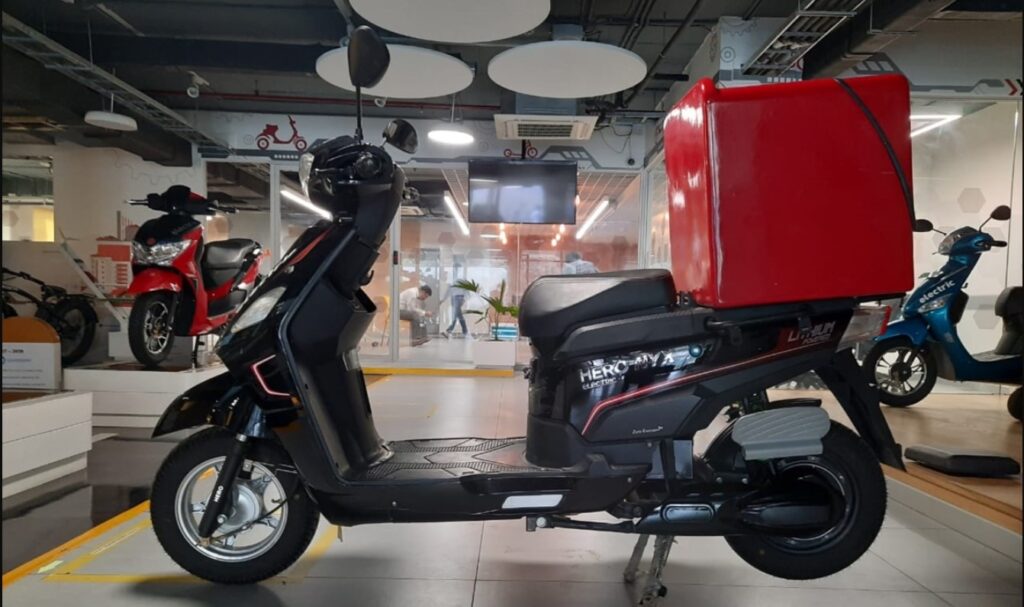
Piyush Prasad, National Business Head, Hero Electric shares: “We have been in the EV domain for the past 15 years. We are intent on driving the dream of India to convert to electric mobility. In the last financial year, we produced 100,000 units, and this year, we are talking about 300,000 units. We have the corresponding production capacity to go up to 500,000 units. This showcases our level of commitment and confidence in our capabilities in EVs. We are supported by the central government drive to convert up to 80 per cent of the entire fleet to EVs by 2030.”
Praharsh Chandra, Co-Founder and COO, Shadowfax says: “In the last few years, we have witnessed tremendous evolution in this sector supported by the government policies and the changes in the designs of the vehicle itself. today, with all these changes, EVs have become much more economical to own and to use. This is one of the reasons for the natural and swift transition of the delivery partners to electric vehicles which was not the case before. Also, the multi-model payment is attractive to the final consumer to own or rent these vehicles. It also shows that their major concern is that the cost per month matches the cost of petrol at the end of the day. Additionally, most vehicles are allowing riders and partners to get around 20-30 per cent of benefit compared to what they would have otherwise. This is also leading to a natural transition. If earlier it was a push mechanism where companies tried to get their products into the market, now it is more of a pull.”
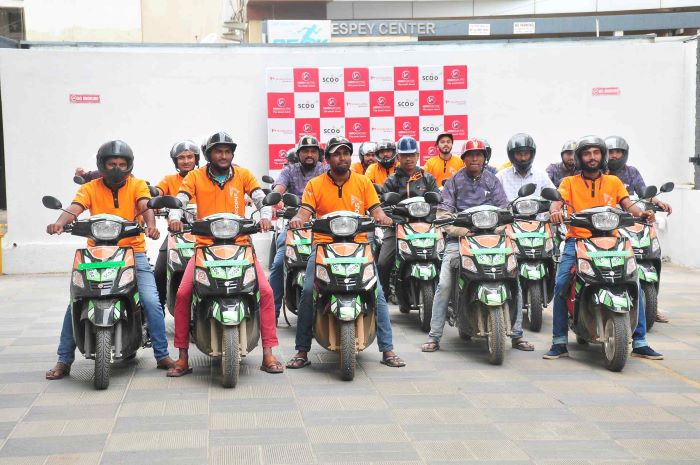
The two-wheelers that Hero Electric and Shadowfax have flagged off are equipped with two batteries Shadowfax platform has a million and more delivery partners on their platform that drive two-wheelers. The platform offers partners options to their customers who choose from the EV brands and the type of vehicles available on the platform. Praharsh adds: “With multiple new players coming into the market, we wish to work with brands who are trusted and who have been in this space for a while. The partnership with Hero Electric ensures, for us, the safety standards that we seek.”
Under FAME II, the central government has sought that the sector is made more affordable to the customers. Across the country, about 18 states have already released their EV policy supporting the sale of EVs and some are giving subsidies on batteries or are allowing registration with no charges. FAME II allows the subsidy to be pegged at Rs. 15,000 per kilowatt hour, which is being termed as the demand incentive given to the end customer. Currently, Rajasthan, Maharashtra, Delhi, and Gujarat are giving additional subsidies while announcement has been made by the governments of Haryana, Odisha. Karnataka, on the other hand, is offering many sops which are, interestingly, in the form of developing charging infrastructure by giving the concerned companies attractive incentives.
Piyush feels that there are many incentives which are driving the EV adoption: “Our strategy is simple: we aim to be the preferred OEM for the last mile delivery companies. Some of the state governments are following the mandate to convert a percentage of the fleet – right now we are talking about 25 per cent but it may go up to almost 75 per cent – fleet into EVs. While the rental economics are showing encouraging figures, what really tilts the business case in our favor – whether it is a B2B or a B2C business – is the total cost of ownership. With the rising fuel cost, the simple design of EV brings down the service cost.” He agrees that the onus of creating a safe ecosystem begins with OEMs and the need of the hour is to educate the customers.
He feels: “We need to educate them about how to care for the EVs, the right kind of servicing, their proper maintenance, the proper way of charging them besides giving them the knowledge on various do's and don'ts of managing these vehicles. At every step, we must hand-hold the end customer.” According to him, selling the vehicle is the easiest part of the business and the real challenge appears post sales. He continues: “This is the time when the customer needs our support to understand his needs, and develop trust, and to educate him about the type of batteries that we use. Our batteries are made of lithium, made in India and are portable. This is a 1.5-kilowatt battery, and the ARAI-prescribed mileage is 80 kilometers per hour but with a real range on the road 55-60 kmph per charge when charged 100%. It will take 4-5 hours for a full charge.”
Of the two models available, one has two batteries which comprise both portable and fixed, while the other model comes in two versions – with single and double batteries. Currently, Hero Electric has 2000 charging points, and the company is looking at taking this number to almost 20,000 points. The Hero Electric e-scooter is priced at Rs. 77,000, ex-showroom.
Ramping Up Production
Despite the supply chain constraints in the last few months, Hero Electric is going ahead with their ramp up plans to meet the market demands. The company has a plant in Ludhiana, and they conducted the groundbreaking ceremony in July 2022 to establish another new plant with a production capacity of additional 200,000 vehicles. In a bid to support their partnerships and their commitments, the company entered a partnership with Mahindra & Mahindra roughly seven months ago to supply them with 200,000 units. Beyond that, they have set up one more plant within their Ludhiana facility, and this new plant will occupy about 10 acres producing 200,000 vehicles more.
Piyush says further: “There are a couple of greenfield projects we are planning which will reinforce the company’s overall vision of producing a million Hero Electric scooters in a year. In the last financial year, we have recorded a 28 per cent market share and in the current financial year, we have set a sales target of three lakh units, which we would like to ramp up to five lakhs.” With the sales increasing in the last couple of years, resale and aftermarket servicing will be more visible in the next couple of years. As of today, Hero Electric has 750 touch points and is growing steadily for the benefit of the customers. The company is going ahead with their regular expansion plans in the country including the Northeast market.


